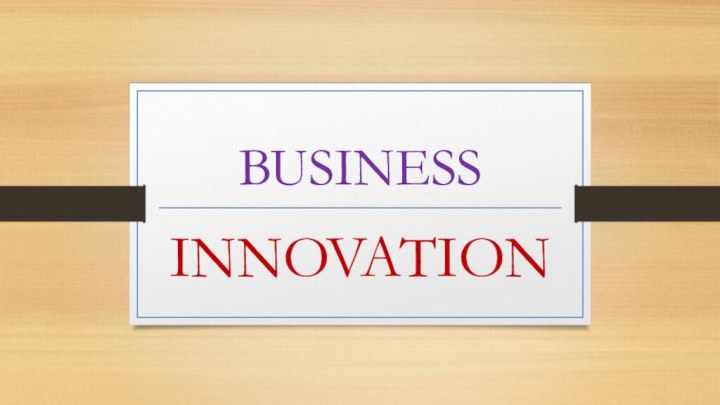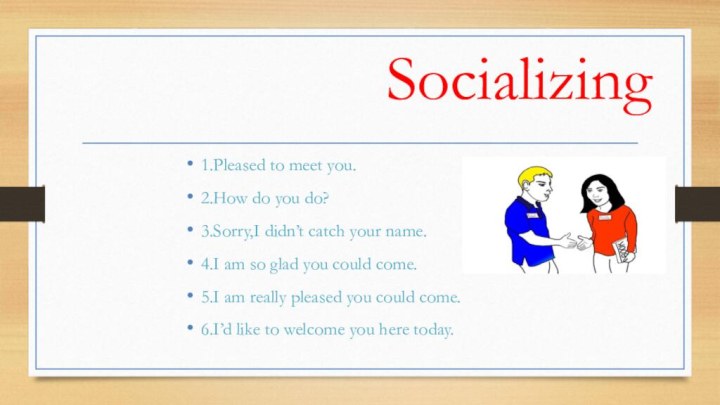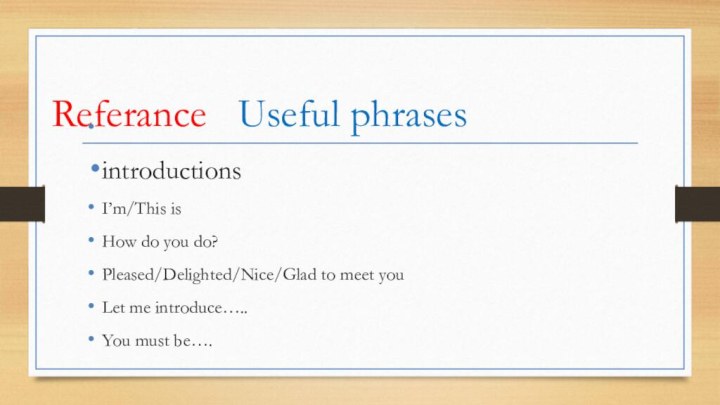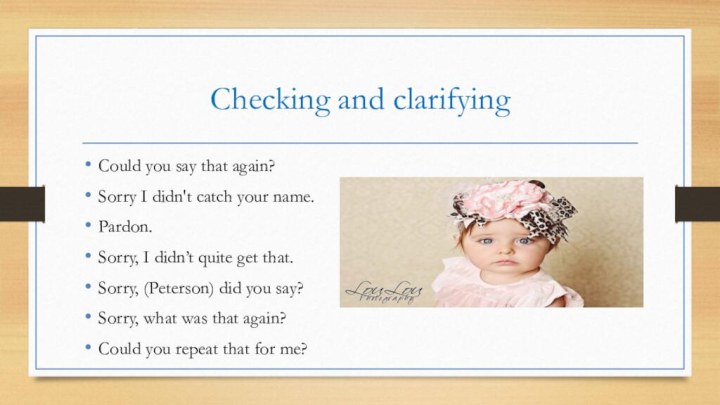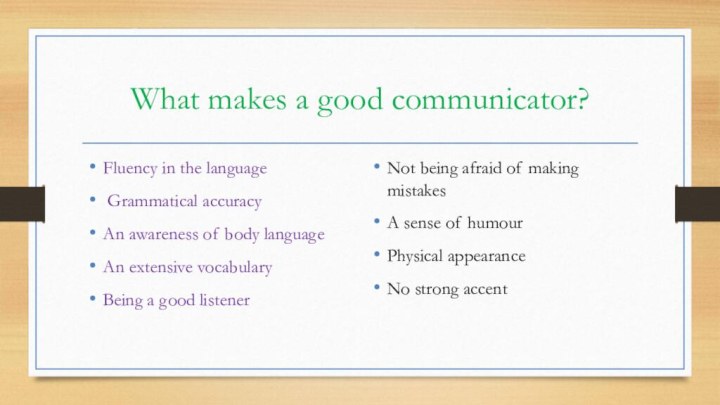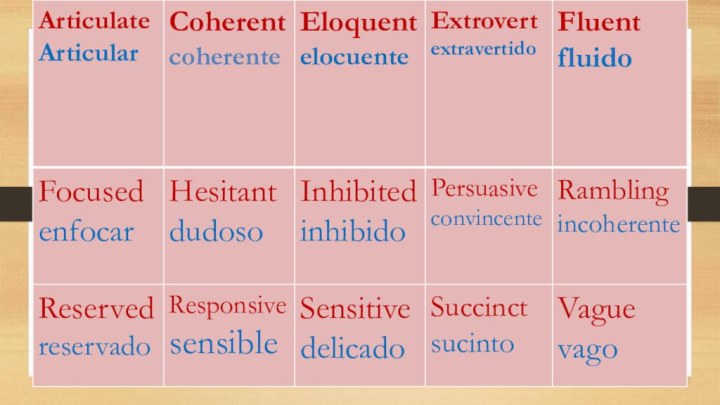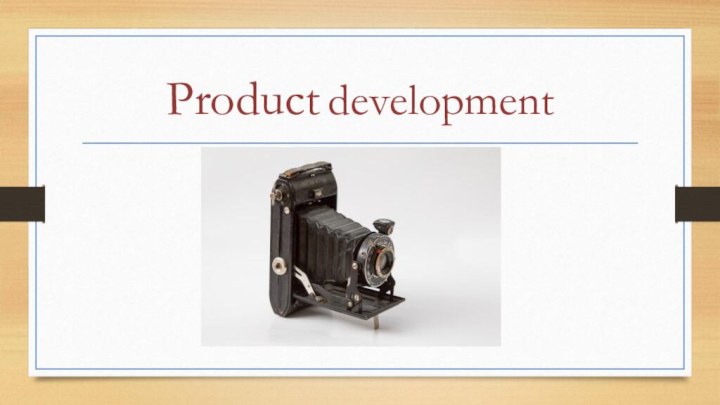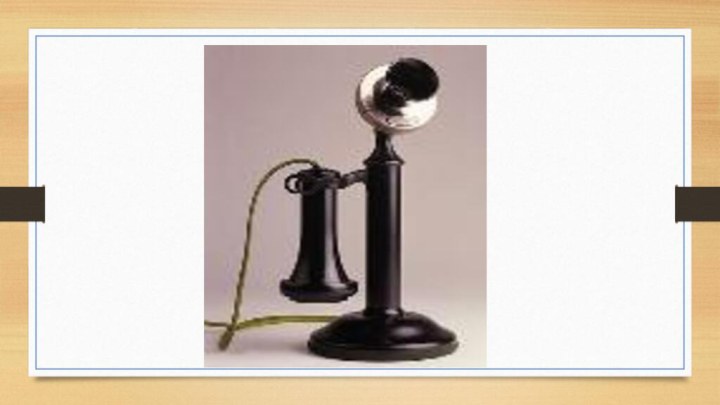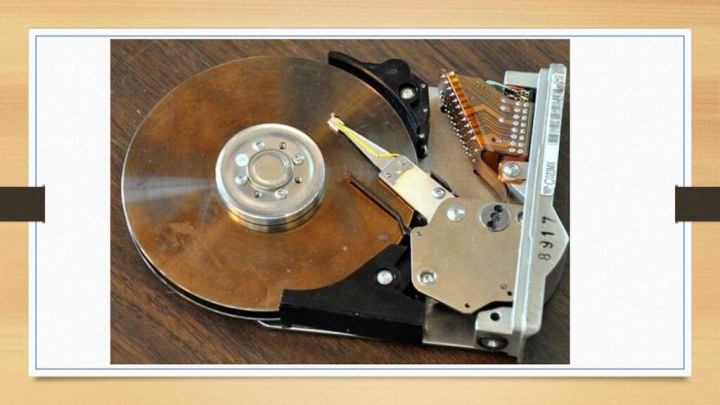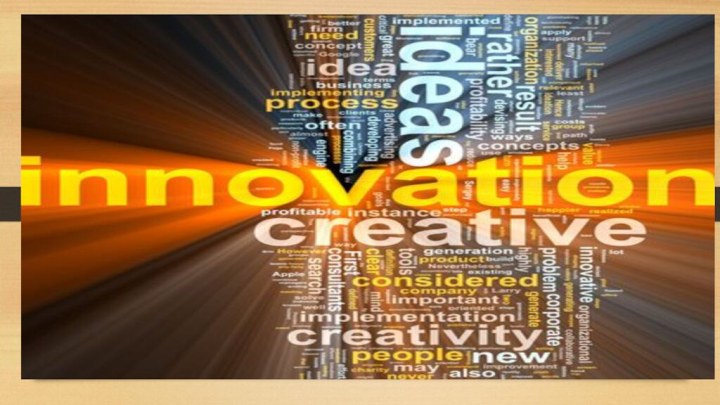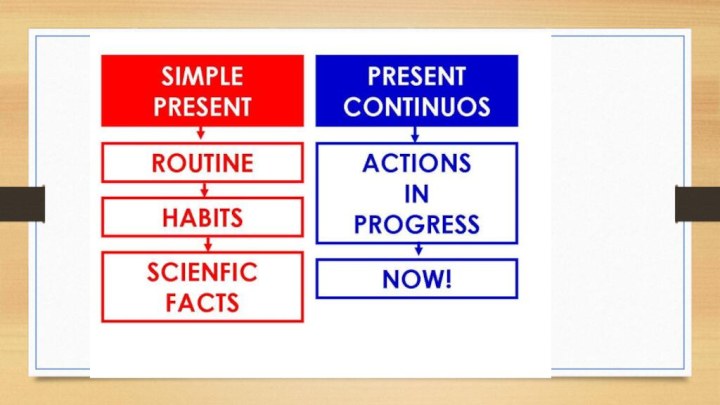Слайд 2
Socializing
1.Pleased to meet you.
2.How do you do?
3.Sorry,I didn’t
catch your name.
4.I am so glad you could come.
5.I
am really pleased you could come.
6.I’d like to welcome you here today.
Слайд 3
Referance Useful phrases
introductions
I’m/This is
How do you do?
Pleased/Delighted/Nice/Glad to meet you
Let me introduce…..
You must be….
Слайд 4
Checking and clarifying
Could you say that again?
Sorry I
didn't catch your name.
Pardon.
Sorry, I didn’t quite get that.
Sorry,
(Peterson) did you say?
Sorry, what was that again?
Could you repeat that for me?
Слайд 5
What makes a good communicator?
Fluency in the language
Grammatical accuracy
An awareness of body language
An extensive vocabulary
Being a good listener
Not being afraid of making mistakes
A sense of humour
Physical appearance
No strong accent
Слайд 13
Innovation is the act of introducing something new
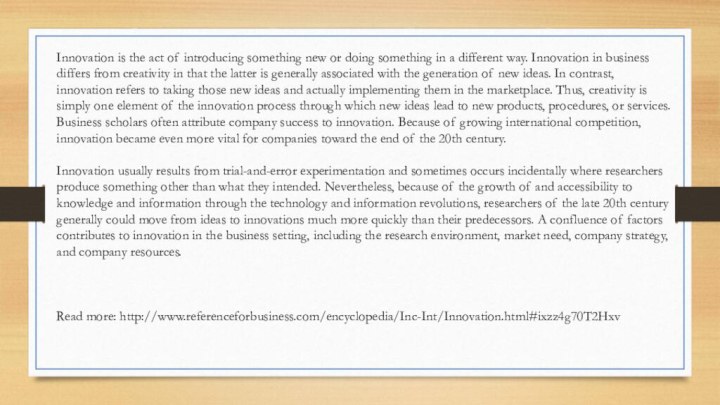
or doing something in a different way. Innovation in
business differs from creativity in that the latter is generally associated with the generation of new ideas. In contrast, innovation refers to taking those new ideas and actually implementing them in the marketplace. Thus, creativity is simply one element of the innovation process through which new ideas lead to new products, procedures, or services. Business scholars often attribute company success to innovation. Because of growing international competition, innovation became even more vital for companies toward the end of the 20th century.
Innovation usually results from trial-and-error experimentation and sometimes occurs incidentally where researchers produce something other than what they intended. Nevertheless, because of the growth of and accessibility to knowledge and information through the technology and information revolutions, researchers of the late 20th century generally could move from ideas to innovations much more quickly than their predecessors. A confluence of factors contributes to innovation in the business setting, including the research environment, market need, company strategy, and company resources.
Read more: http://www.referenceforbusiness.com/encyclopedia/Inc-Int/Innovation.html#ixzz4g70T2Hxv
Слайд 14
HISTORY OF INNOVATION IN BUSINESS
While innovation has existed
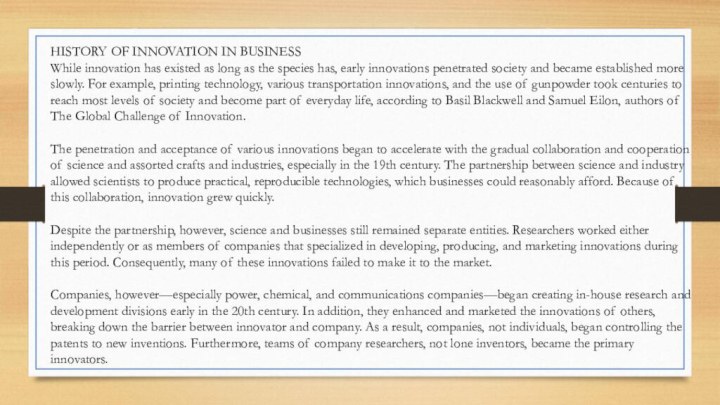
as long as the species has, early innovations penetrated
society and became established more slowly. For example, printing technology, various transportation innovations, and the use of gunpowder took centuries to reach most levels of society and become part of everyday life, according to Basil Blackwell and Samuel Eilon, authors of The Global Challenge of Innovation.
The penetration and acceptance of various innovations began to accelerate with the gradual collaboration and cooperation of science and assorted crafts and industries, especially in the 19th century. The partnership between science and industry allowed scientists to produce practical, reproducible technologies, which businesses could reasonably afford. Because of this collaboration, innovation grew quickly.
Despite the partnership, however, science and businesses still remained separate entities. Researchers worked either independently or as members of companies that specialized in developing, producing, and marketing innovations during this period. Consequently, many of these innovations failed to make it to the market.
Companies, however—especially power, chemical, and communications companies—began creating in-house research and development divisions early in the 20th century. In addition, they enhanced and marketed the innovations of others, breaking down the barrier between innovator and company. As a result, companies, not individuals, began controlling the patents to new inventions. Furthermore, teams of company researchers, not lone inventors, became the primary innovators.
Слайд 15
THE INNOVATION PROCESS
While necessarily highly simplified, the "market
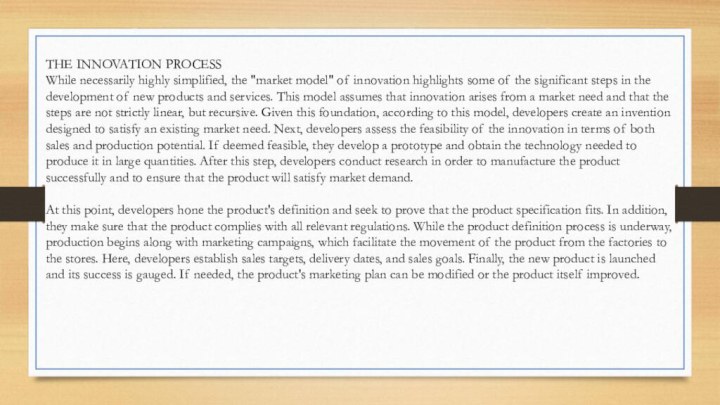
model" of innovation highlights some of the significant steps
in the development of new products and services. This model assumes that innovation arises from a market need and that the steps are not strictly linear, but recursive. Given this foundation, according to this model, developers create an invention designed to satisfy an existing market need. Next, developers assess the feasibility of the innovation in terms of both sales and production potential. If deemed feasible, they develop a prototype and obtain the technology needed to produce it in large quantities. After this step, developers conduct research in order to manufacture the product successfully and to ensure that the product will satisfy market demand.
At this point, developers hone the product's definition and seek to prove that the product specification fits. In addition, they make sure that the product complies with all relevant regulations. While the product definition process is underway, production begins along with marketing campaigns, which facilitate the movement of the product from the factories to the stores. Here, developers establish sales targets, delivery dates, and sales goals. Finally, the new product is launched and its success is gauged. If needed, the product's marketing plan can be modified or the product itself improved.
